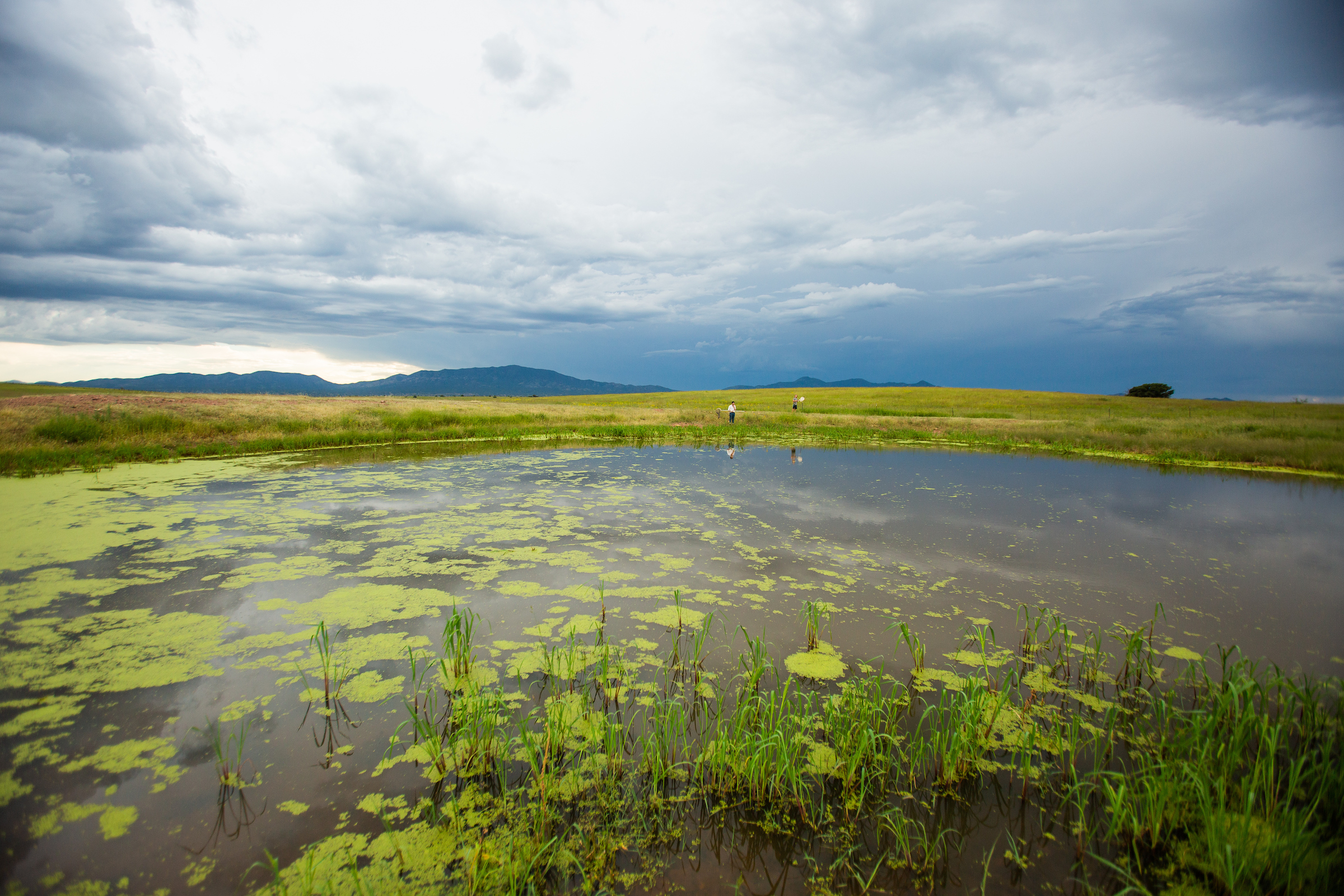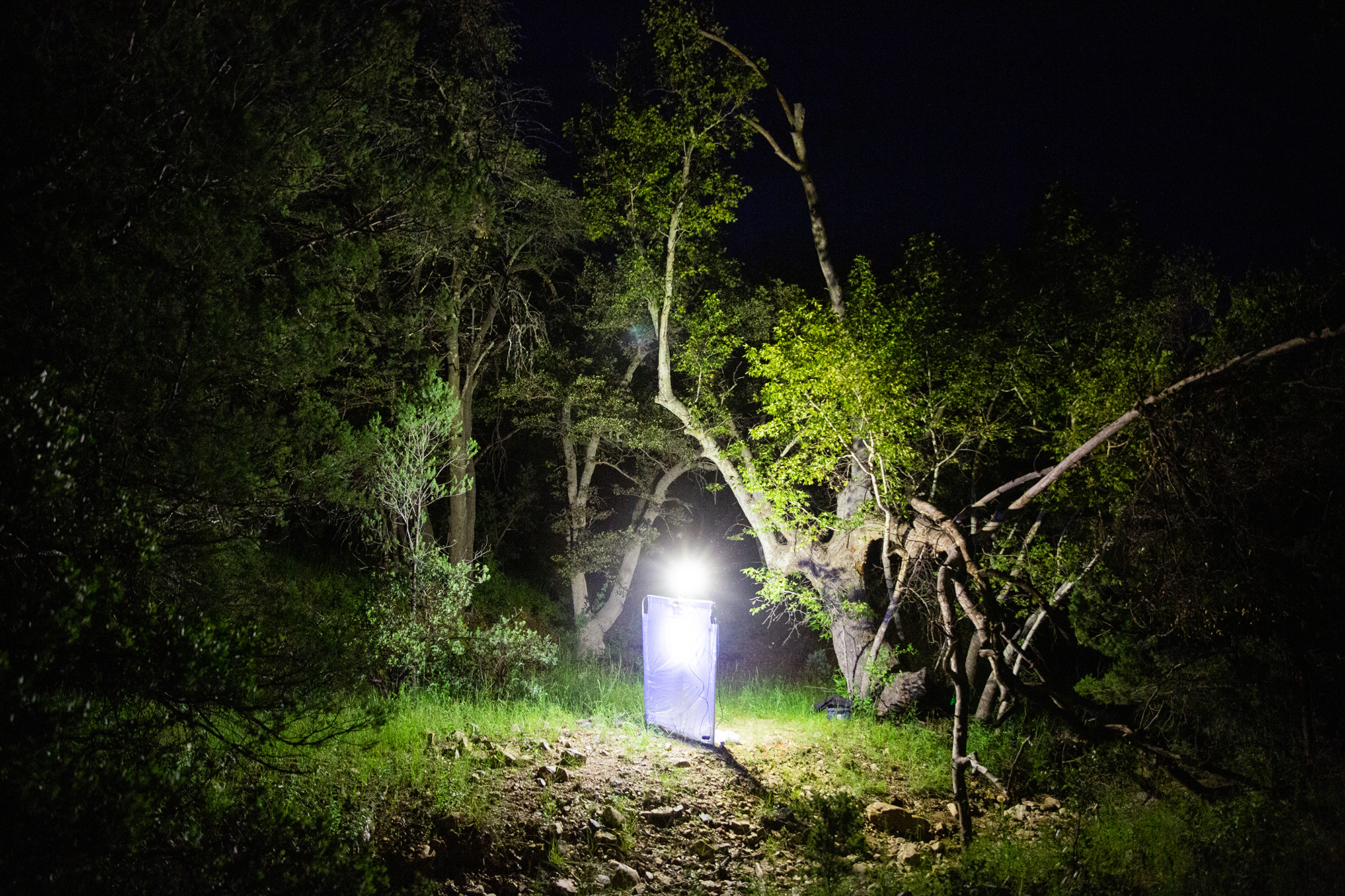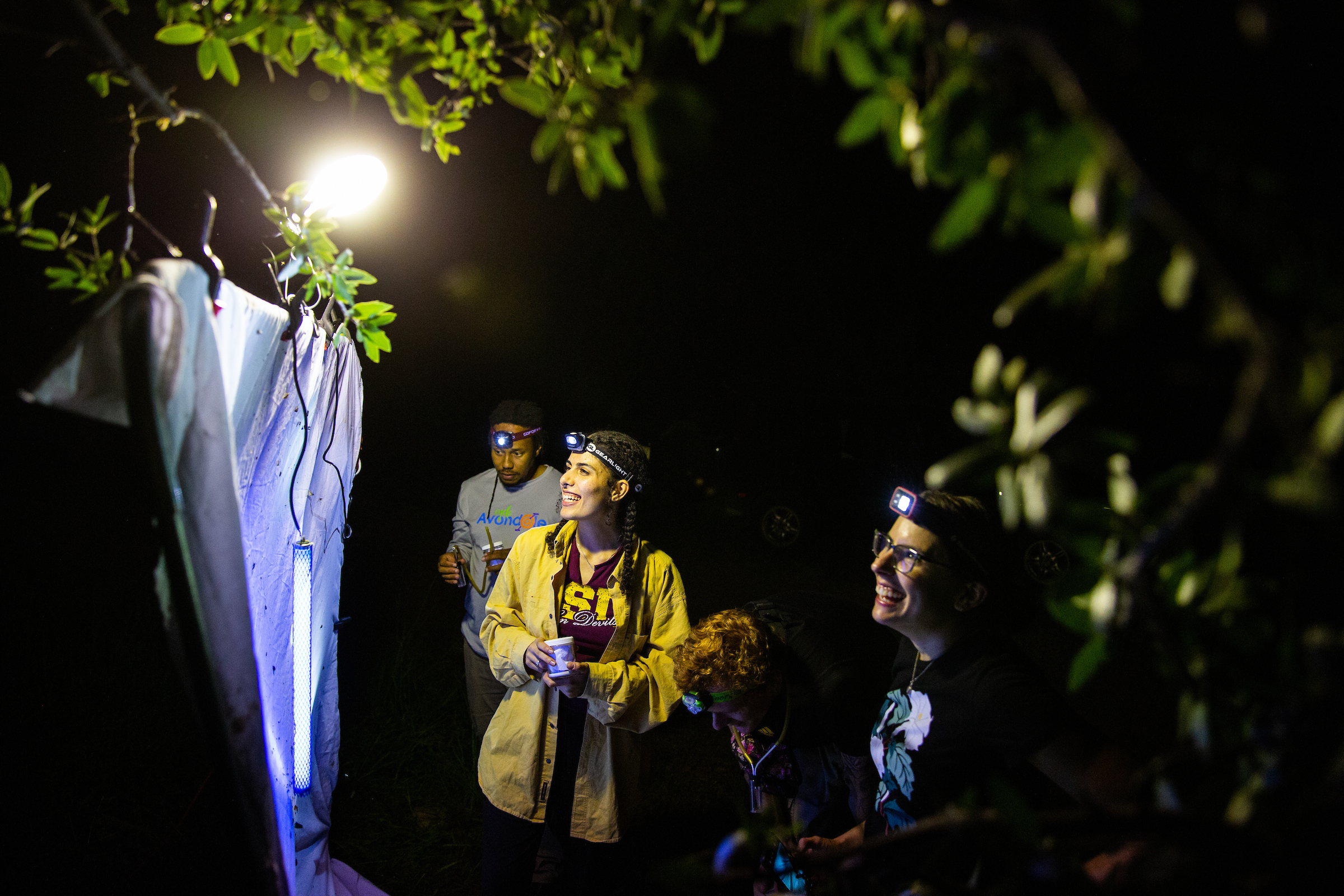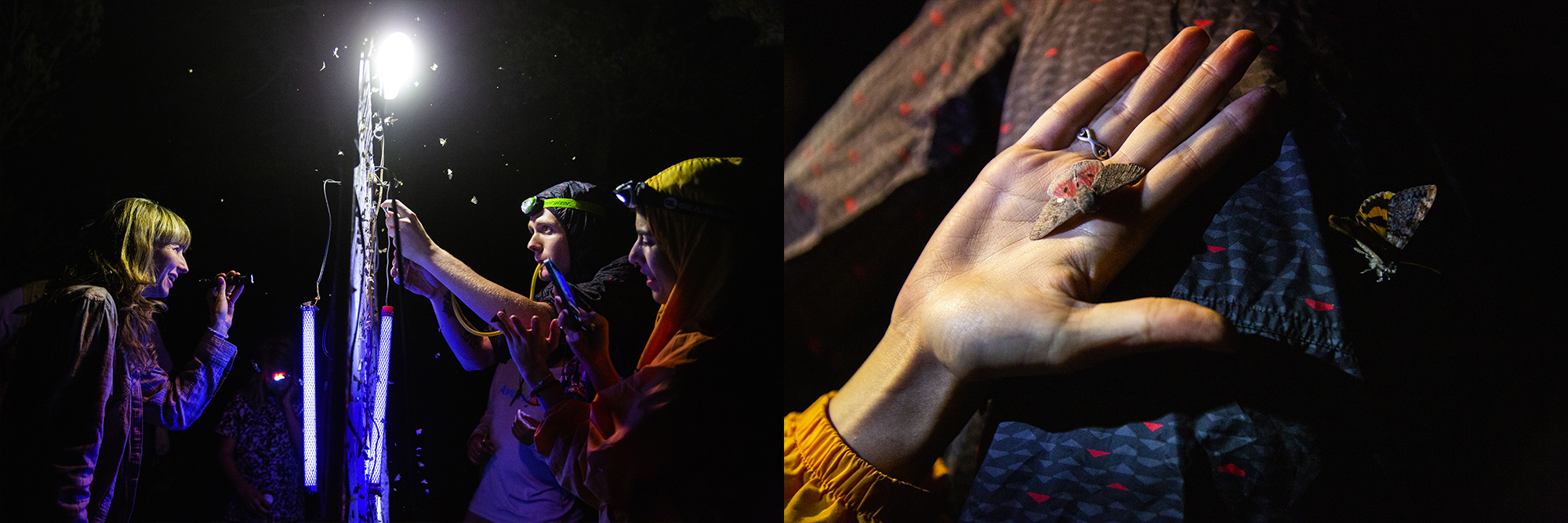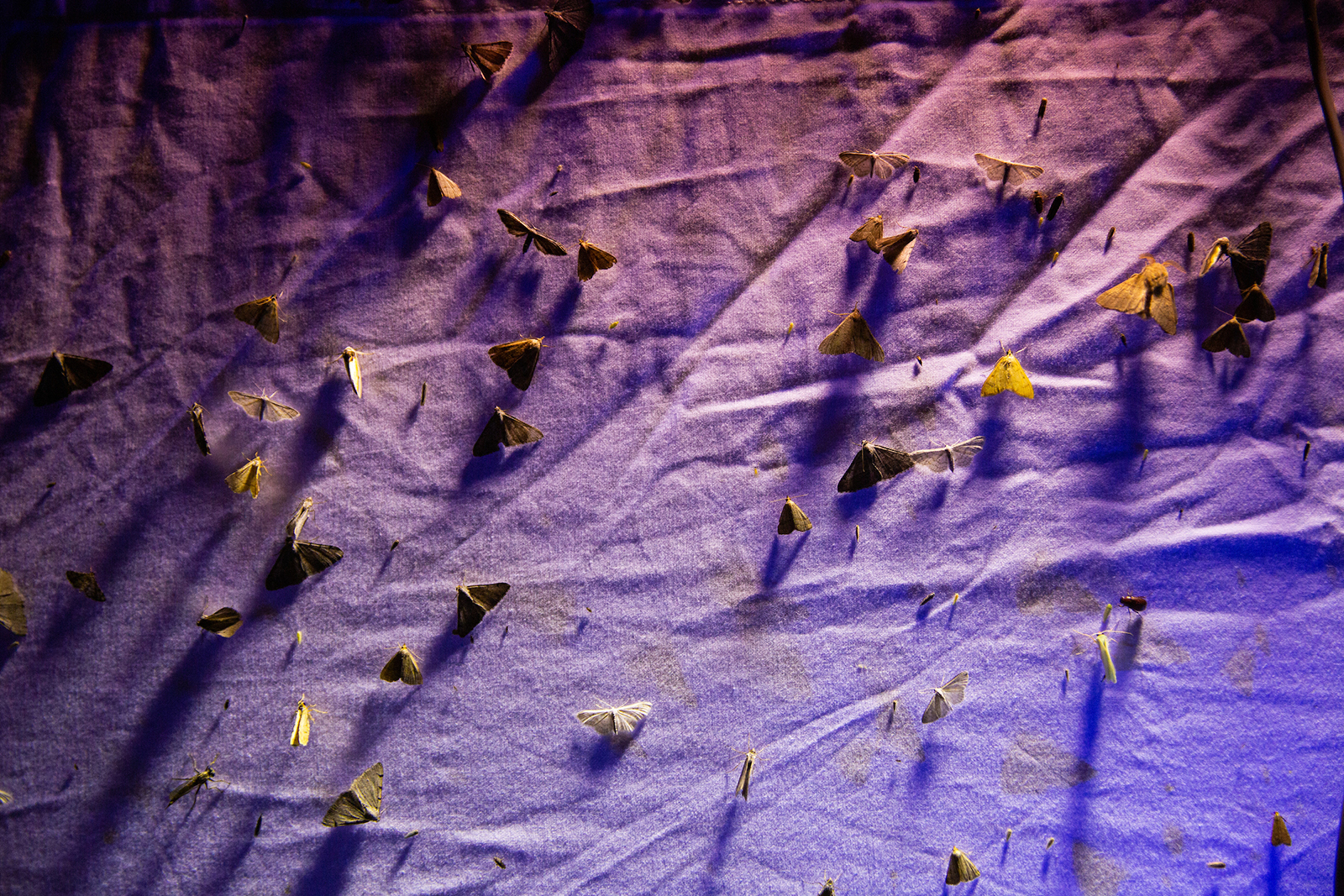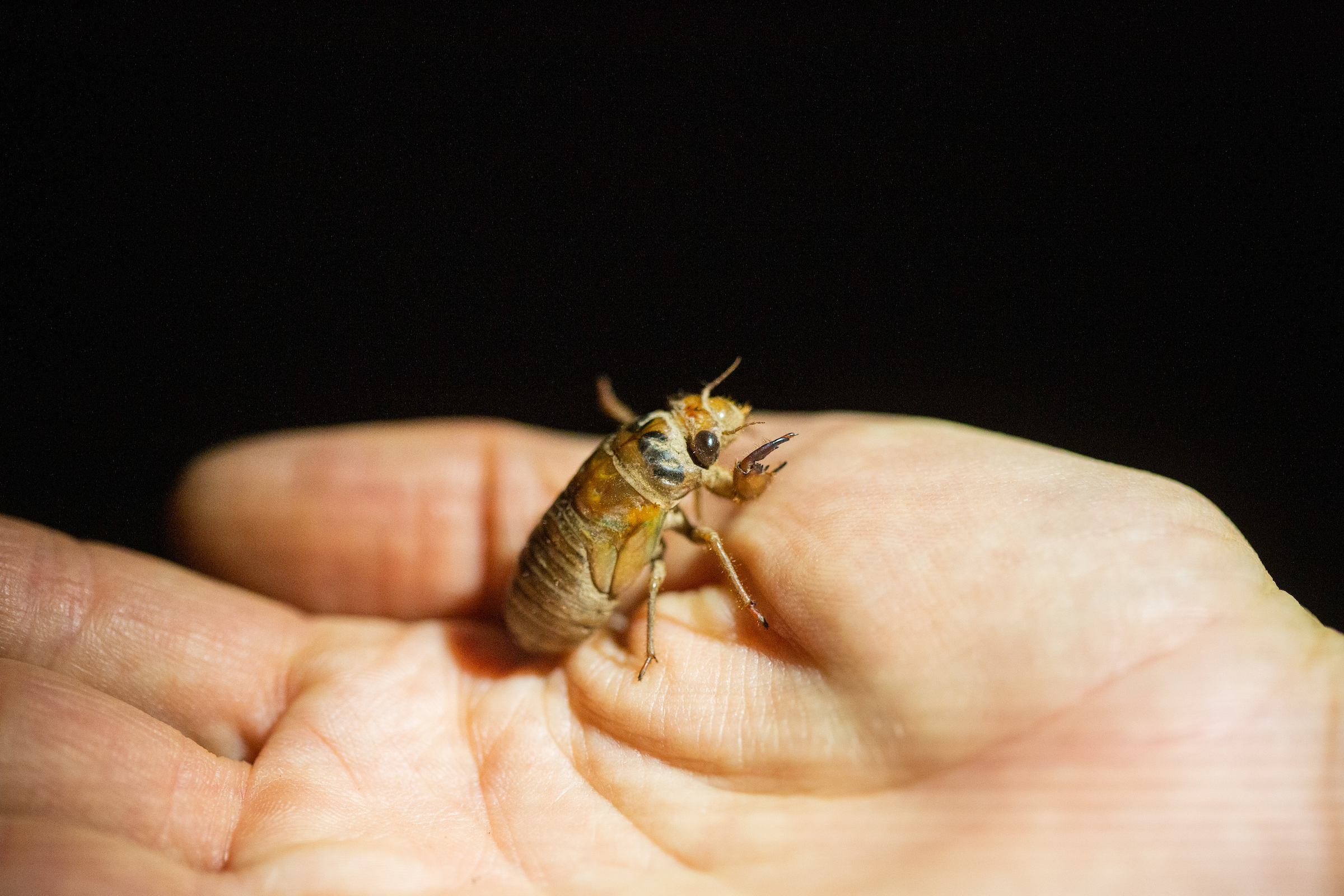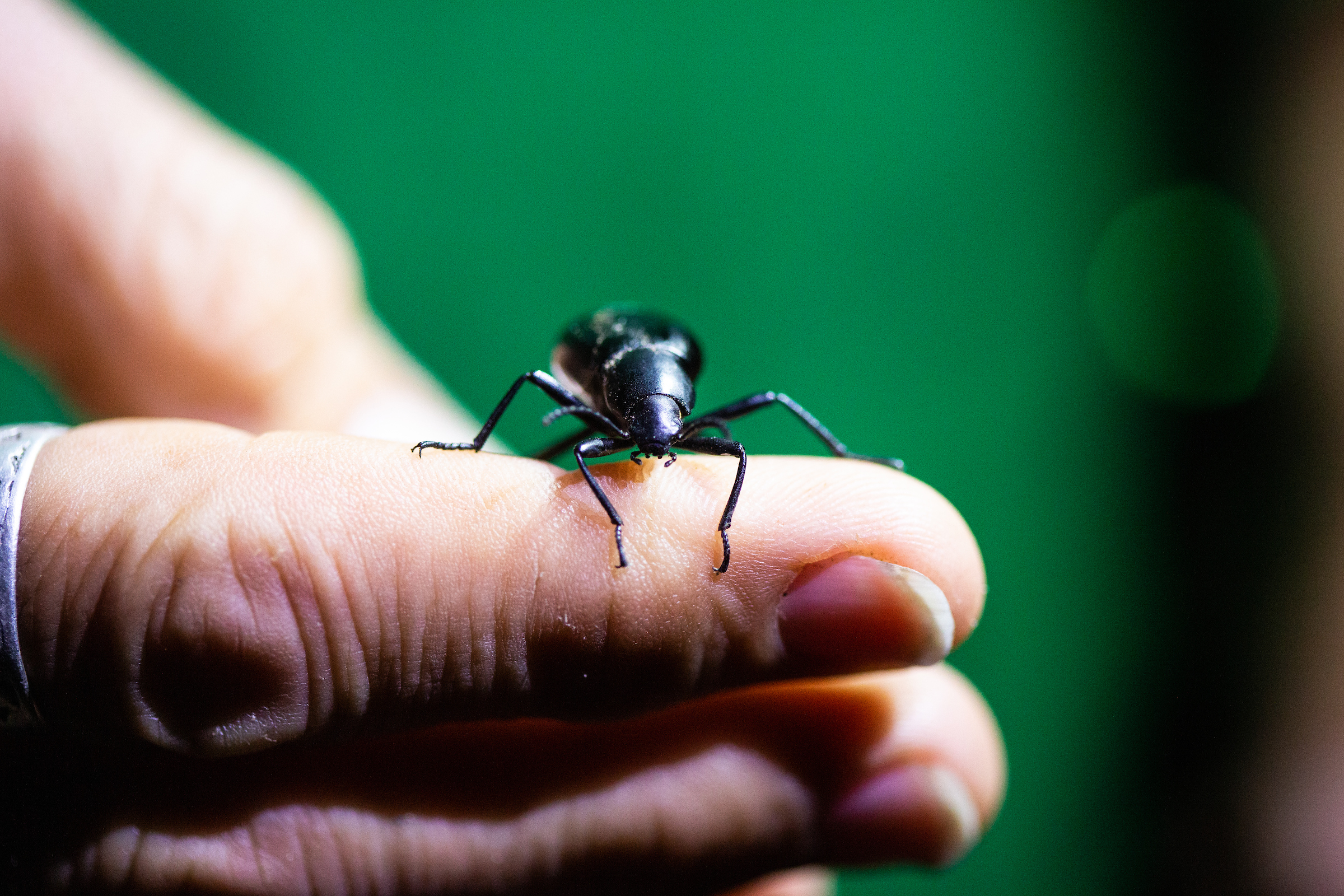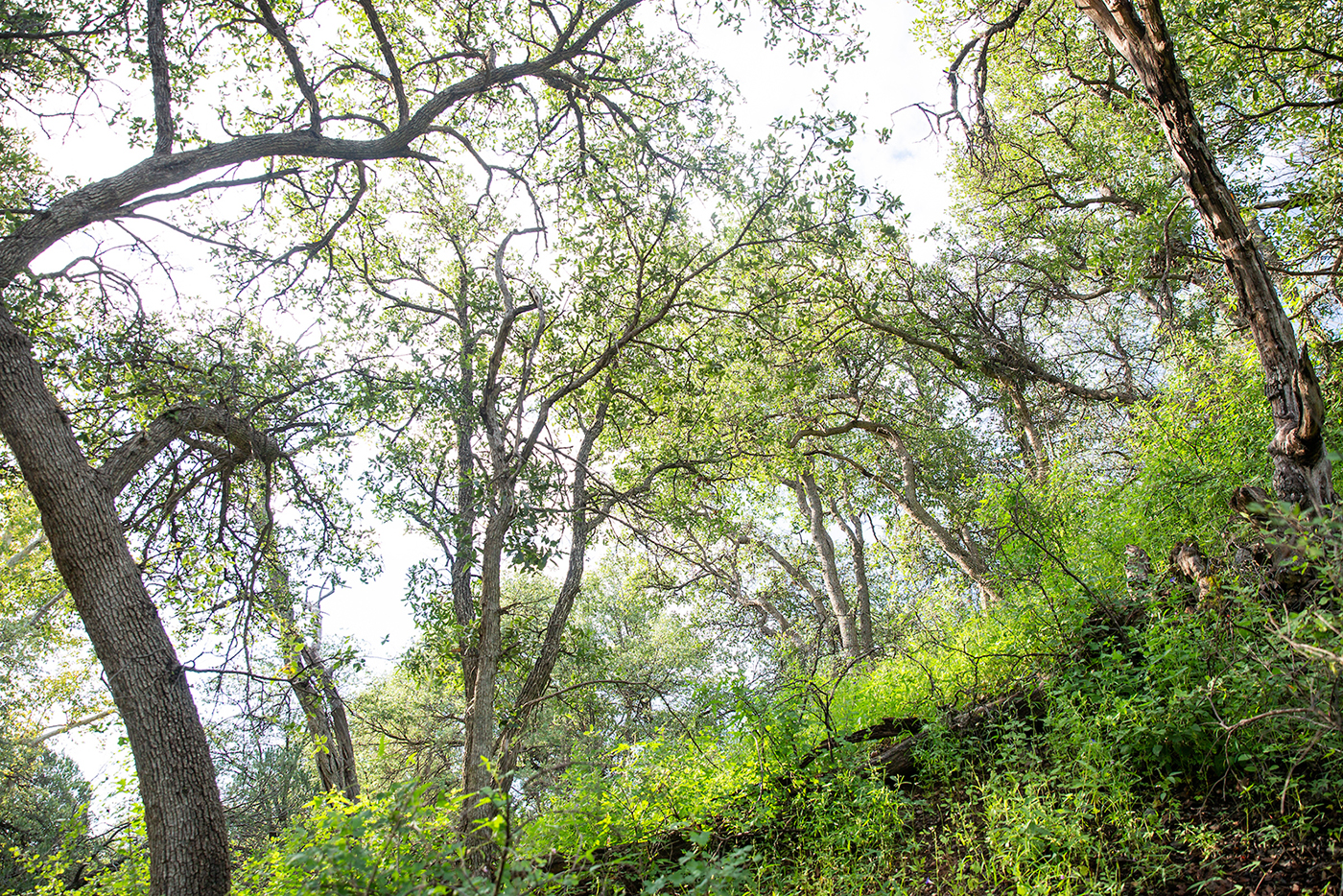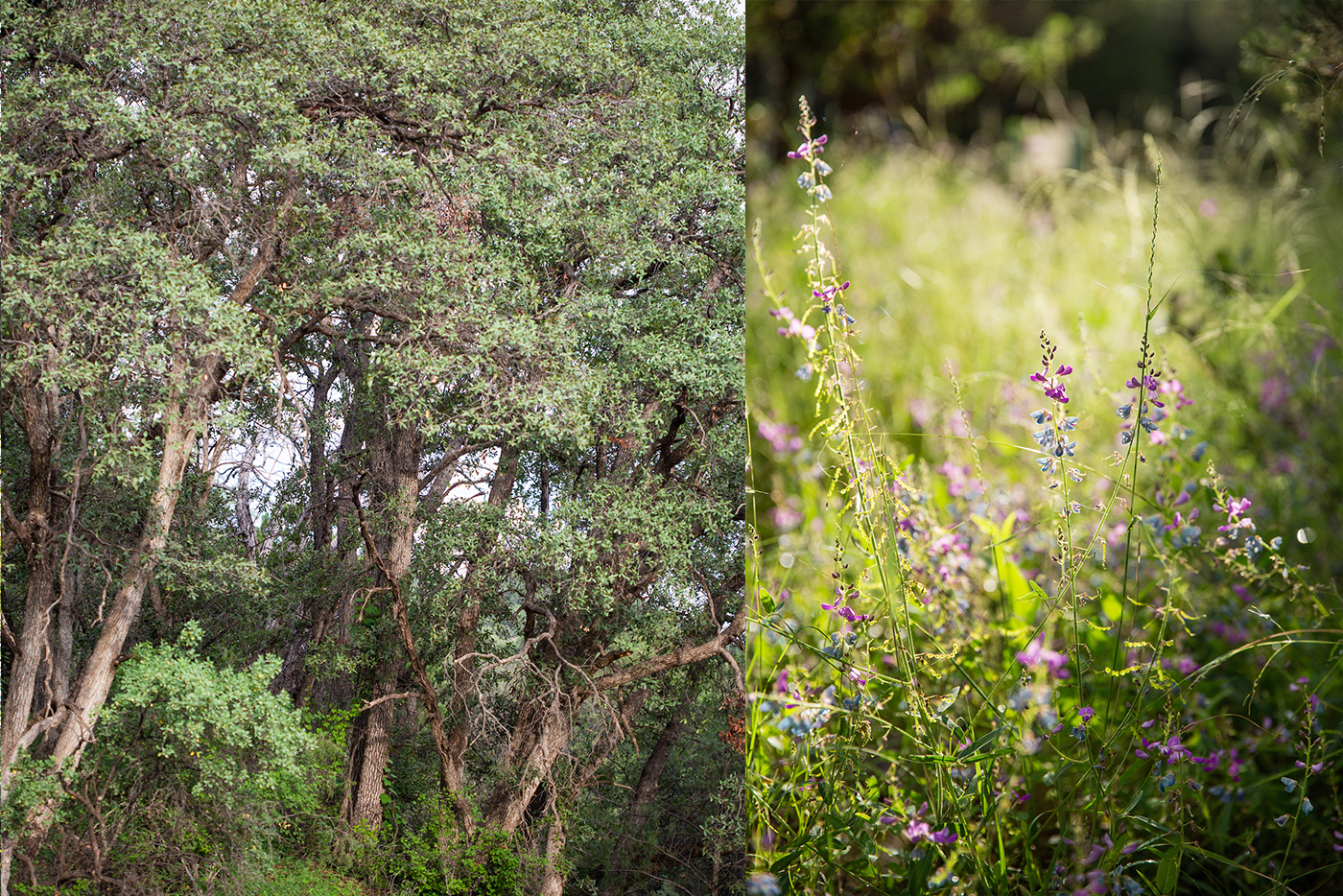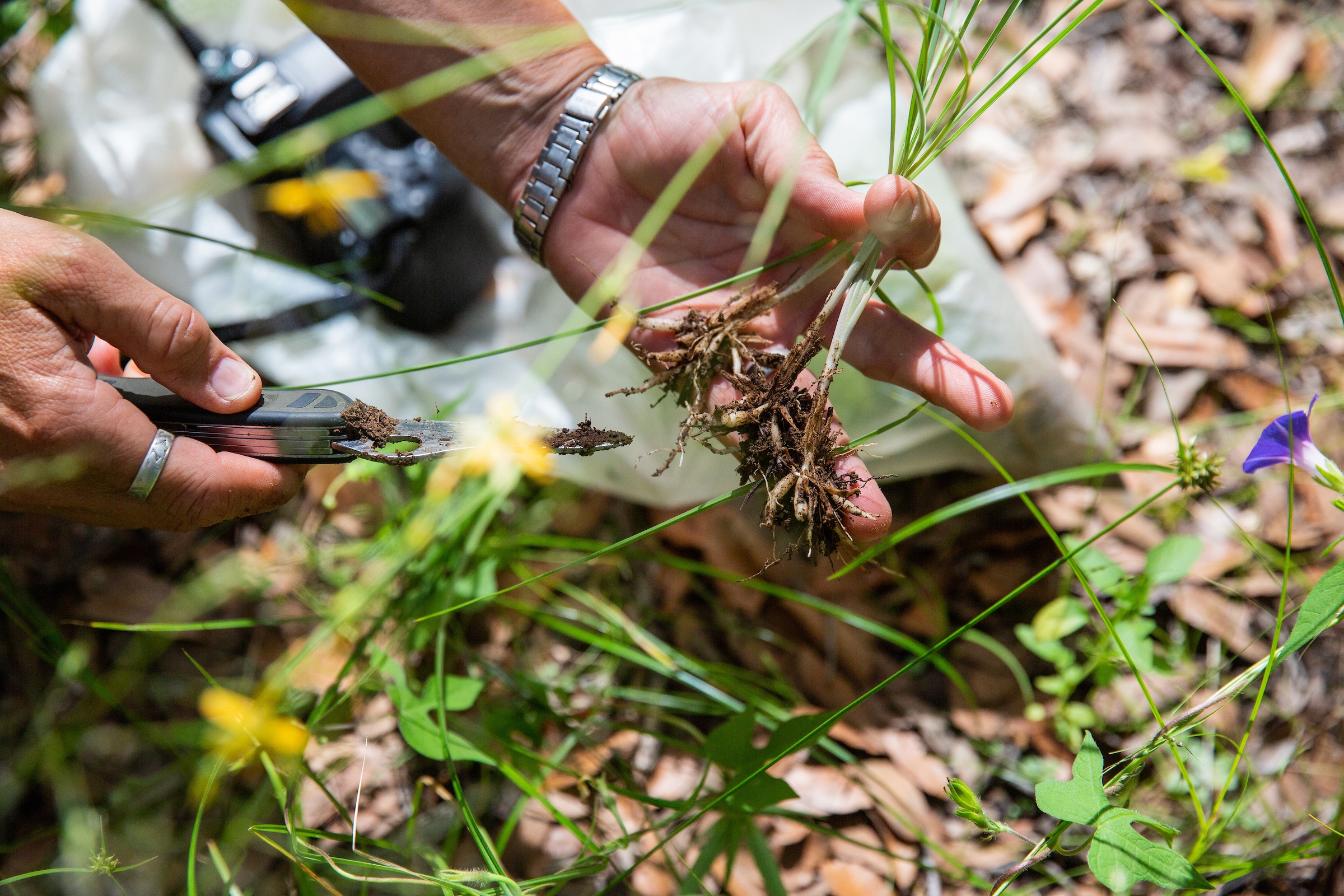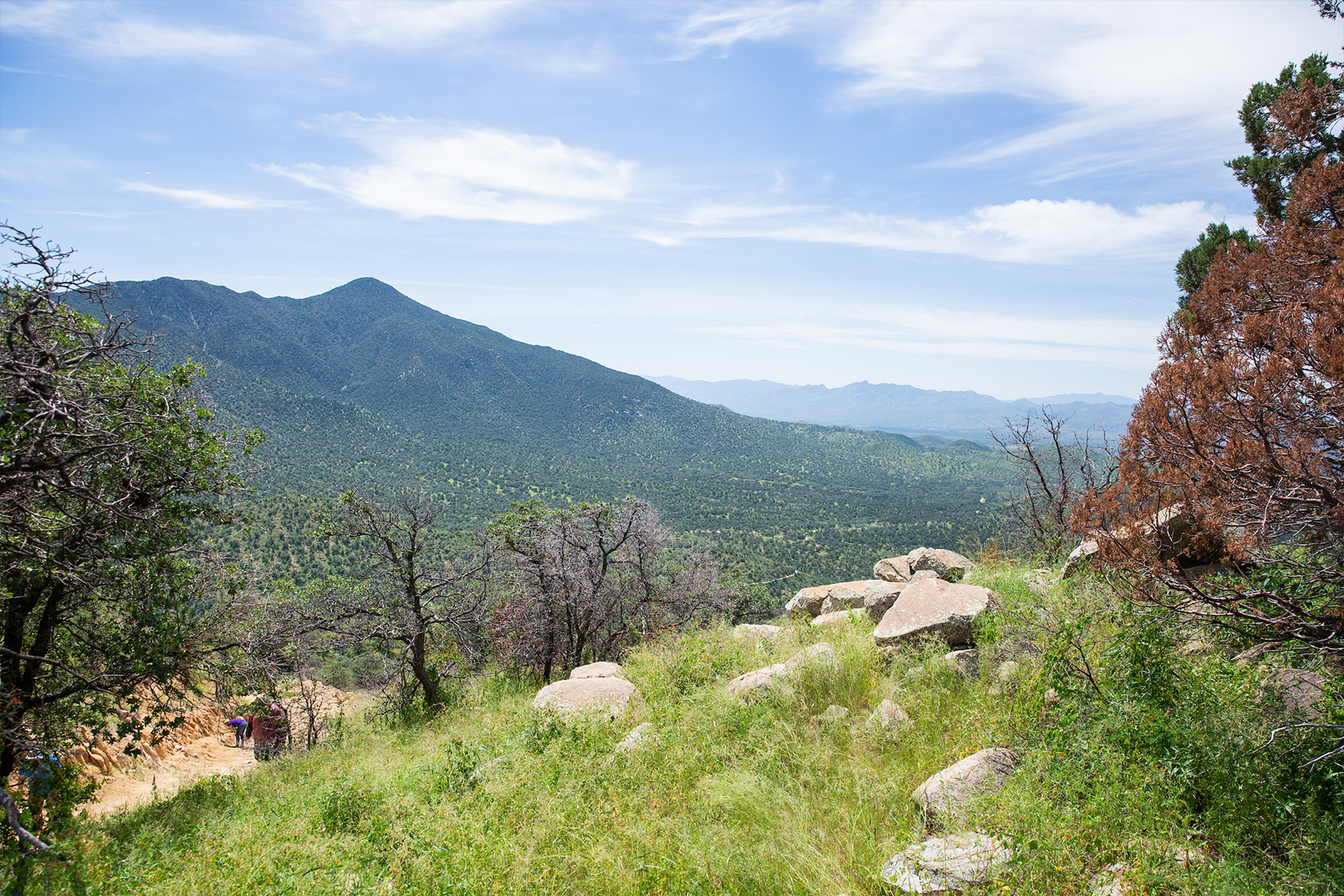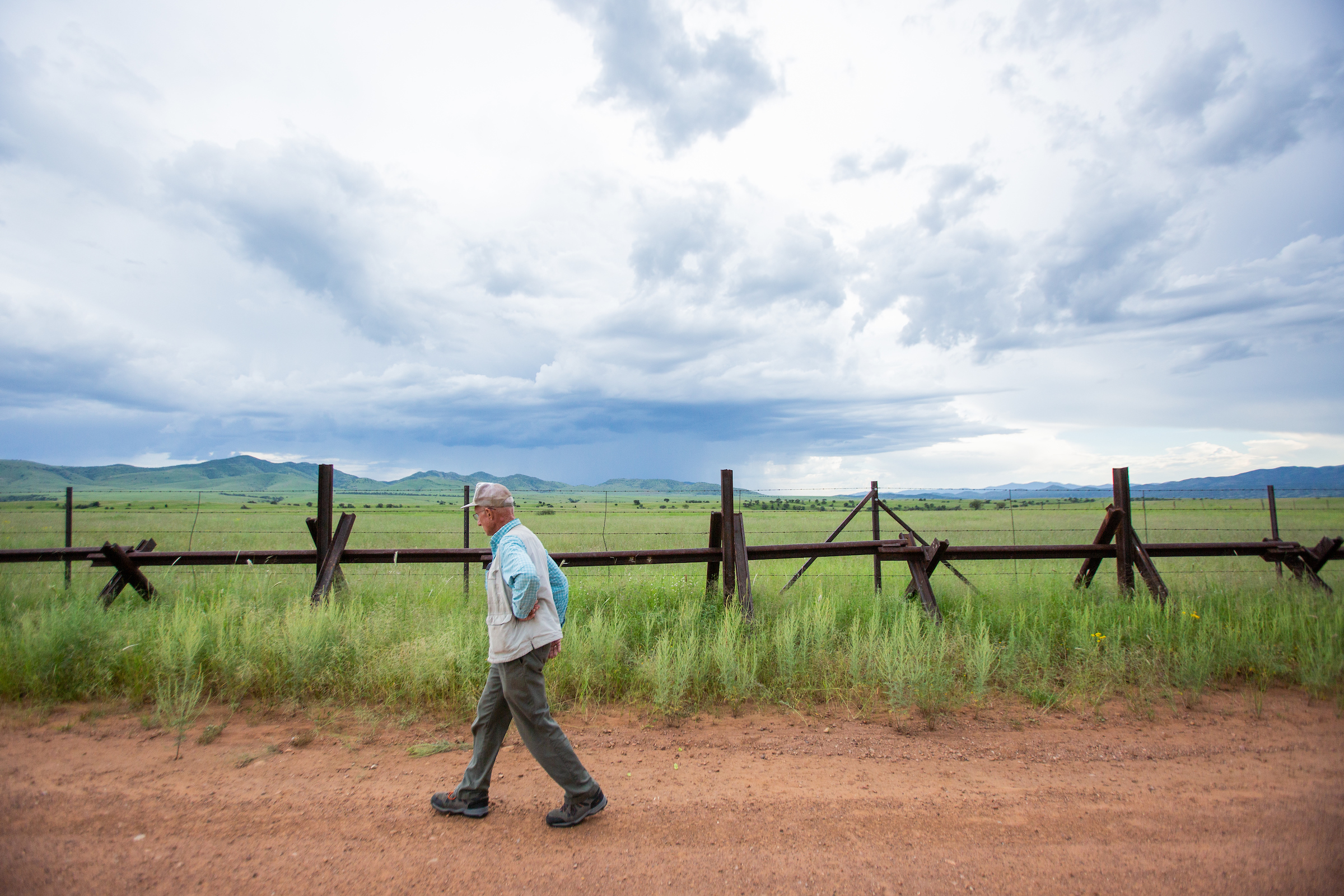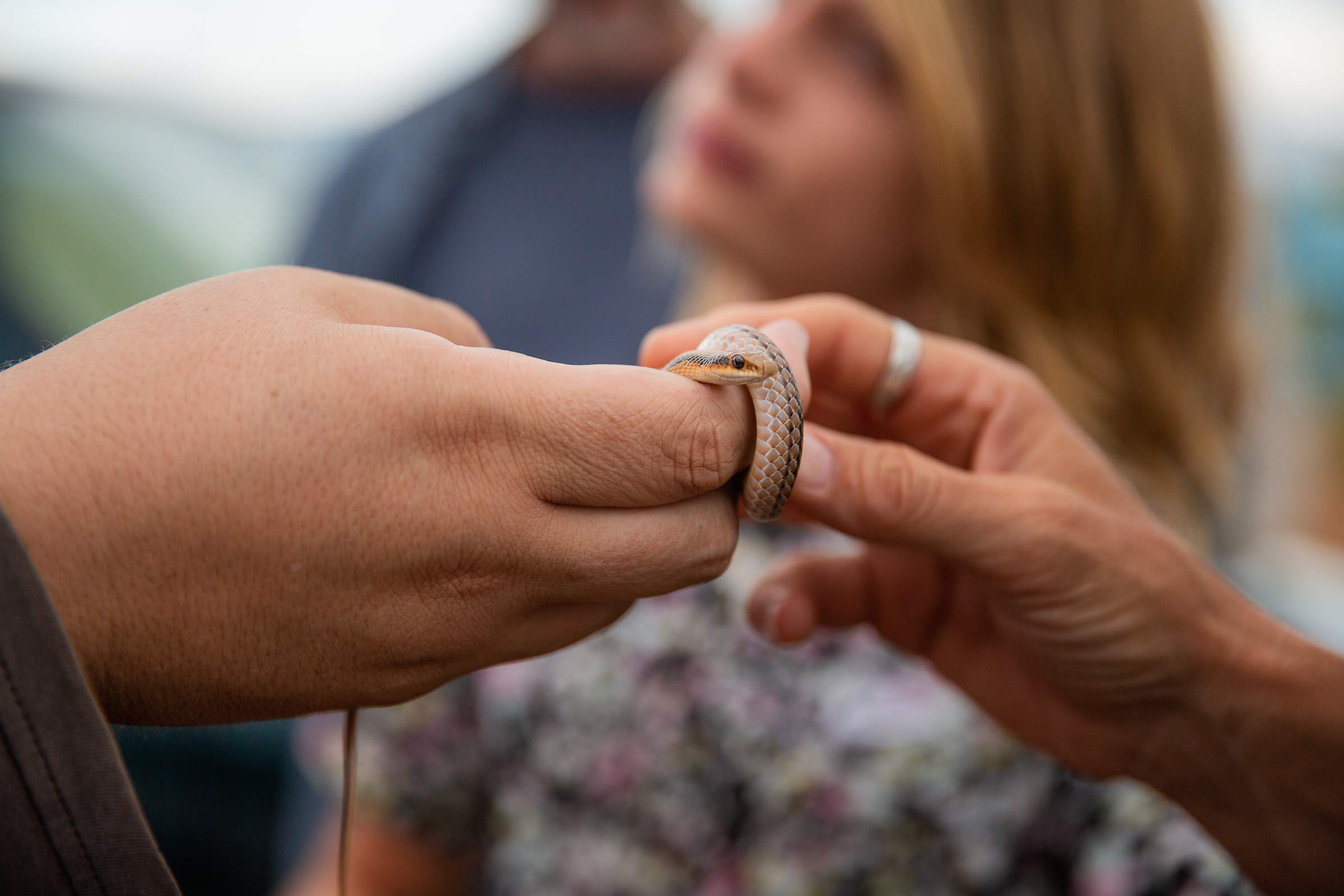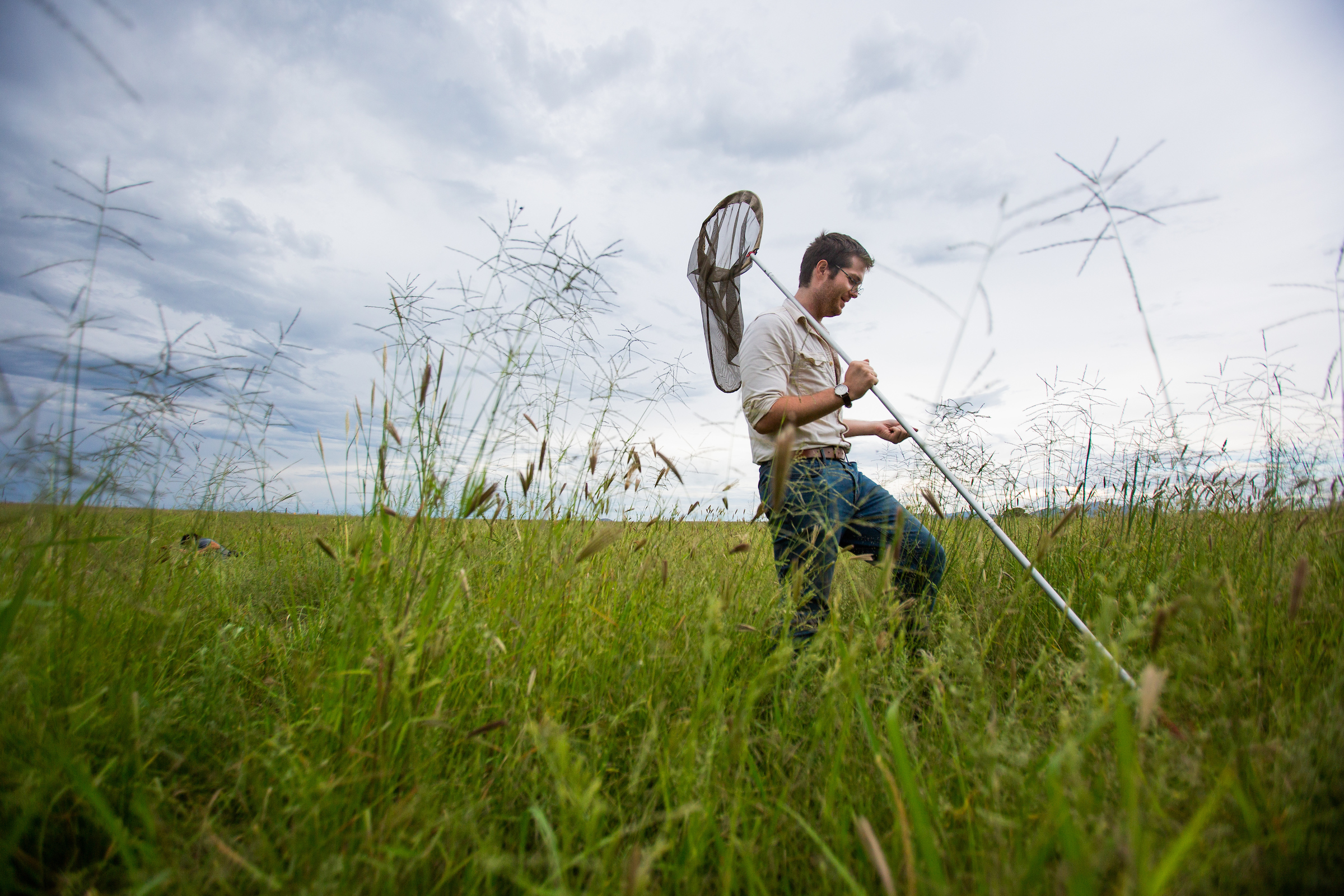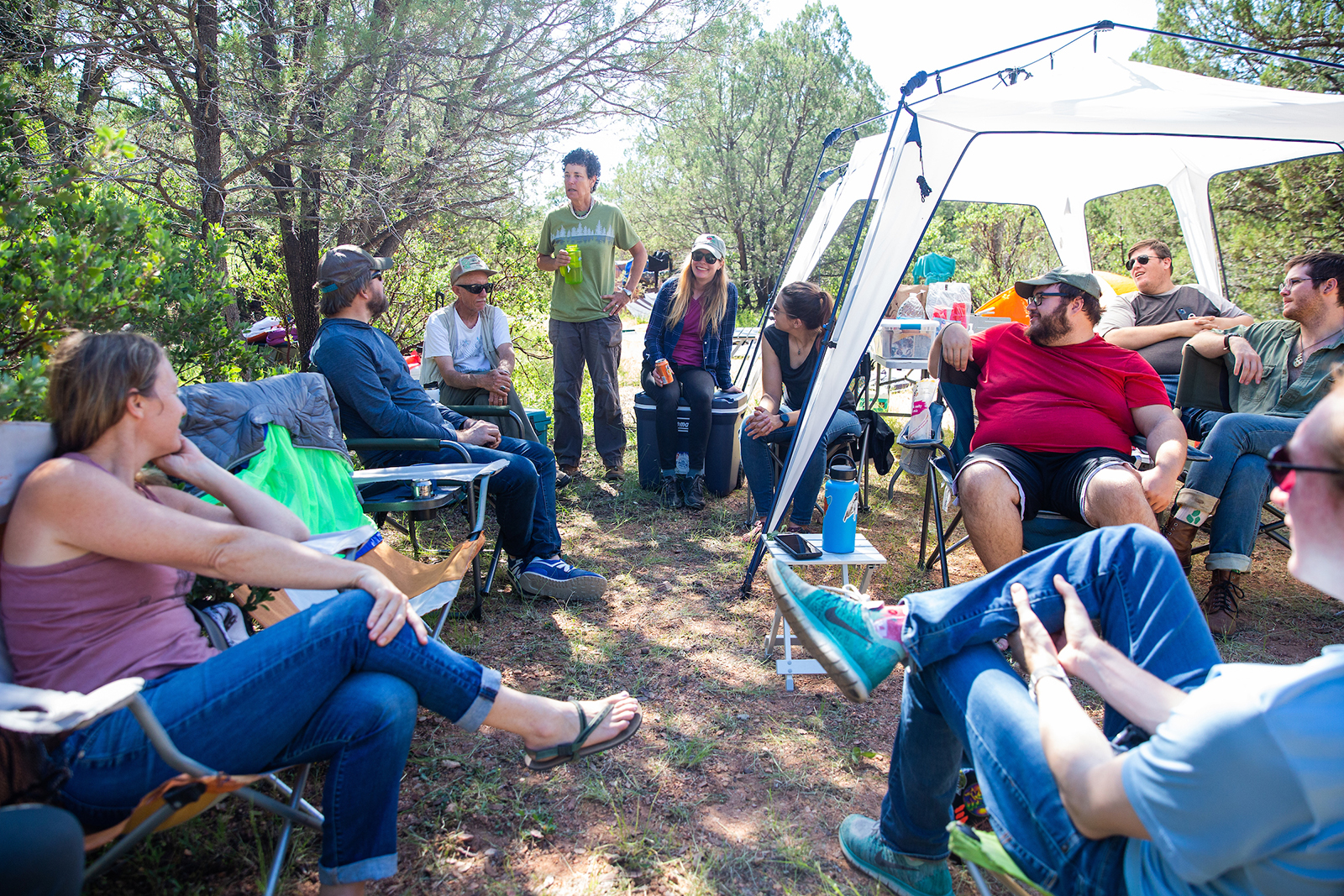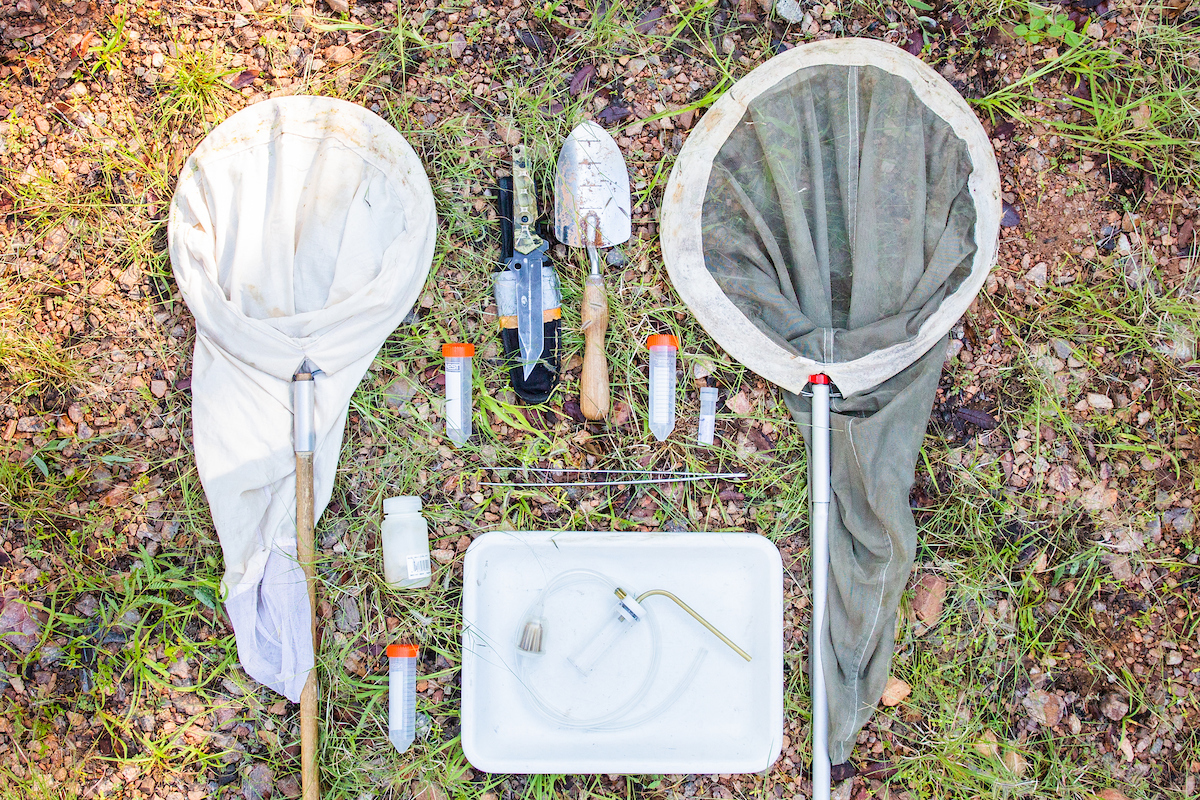Editor's note: Arizona State University photographer and videographer Deanna Dent recently joined researchers from the Biodiversity Knowledge Integration Center on a trip to southern Arizona, where they collected insects after a strong monsoon. Here's what she learned.
This year may well be one of southern Arizona’s wettest monsoons in recorded history, and that has translated into vibrant plant growth and an increase in insect and animal populations after years of extreme drought.
The photo above shows a large pond in the grasslands near the U.S.-Mexico border, east of Nogales, Arizona, and is exactly what researchers from BioKIC, or the Biodiversity Knowledge Integration Center, wanted to see. The researchers planned out a monsoon collection trip this past weekend, and while it's open to researchers, students and their families, they were kind enough to invite me with them as well. As an Arizona native it felt like a rare chance to go onto our public lands and learn about the plants, insects and animals of southern Arizona.
When I first arrived at the Coronado National Forest campsite on Friday night, white sheets were being set up, glowing brightly in the darkness. These white sheets are clamped to a metal frame with a mercury vapor light at top, and a black light resting in the middle of the sheet. The lights were connected to a generator and run until midnight, attracting all types of insects from the dark. Between dinner and breaks, chatting folks examined the sheets to see what had been attracted, commenting at the variety and beauty of the insects. Researchers opted between cupping the small insects in their hands and placing them in vials or jars, or using the aspirator, a kind of vaccuum that pulls in small insects with a filter protecting the operators. These methods work well, but what struck me as interesting was that experts don't know why insects are attracted to the lights. They have theories, but no one knows why they're drawn to bright lights.
The students, researchers and community members all spend time together, creating a strong sense of community interest. I'm perfectly welcome to ask a series of silly questions to experts in their field about how many insect species exist in the world or why they collect this beetle but not that one. Or why are moths dusty? And thankfully there are no unwelcome questions.
I ask, "Why this particular area of the Patagonia mountains?"
"This kind of highlands region, and to the Santa Rita mountains north of us, really contained a lot of interesting records from jaguars to a lot of reptiles and amphibians that just get into the U.S. from Mexico and extend their range into here," said Andrew Johnston, invertebrates collections manager and darkling beetle researcher. "So there were a lot of potentially interesting things for us to find in the less documented mountain range."
As the night continues, we find the Arizona state reptile, an Arizona ridge-nosed rattlesnake, curled at the base of a tree just a few feet from one campsite. We walk the small creek looking for frogs and toads, which you can hear but not really see. One camper shares the cicada they found preparing to molt, while botanist Elizabeth Makings shares a desert stink beetle and a dragonfly rests on the white sheet.
I also learned that although experts are very familiar with all the mammal species on Earth, there's a huge question mark on insect species.
"It’s likely that we’ve not described even half of the diversity of insects that currently exist and alive in the world today," Johnston said.
A lack of knowledge of the insect life in an area adds to a lack of future understanding about our environment and ecological systems, as climate change affects our state over time.
The generators go out at midnight and folks head to tents for the evening. As the sun rises over the mountains, green stretches all across the mountains and grasslands below, a shocking green that almost seems out of place in Arizona nowadays.
In the morning, Makings and researcher Ed Gilbert head up a stream that runs through the campsite with three ASU undergraduate students — Ethan Wright, Marcus Reid and Mary Haddad. Makings spends time walking with the students as they explore the grasses, plants, insects and the environment.
"I love to do fieldwork; I mean, why wouldn't you get buggy and hot and sweaty," said Makings, who helps organize the trips. "It's all about the camaraderie and, you know, interacting with scientists that are ... amazing in their field, and I just enjoy learning from everybody."
Gilbert's son, Aven Klecker, manages to catch a fencepost lizard with his lizard lasso. While holding the lizard in his hand, he flips it upside down and gently rubs its belly, which puts it into a still state. He shows the trick to Haddad, who holds the lizard until he jumps up and runs aways.
As we concluded our walk, another set of researchers jumped in four-wheel-drive vehicles to explore the mountaintop areas reachable only by some rough forest roads. As we drive through some of the most scenic areas, we look for areas of interest and finally stop at a high point with a depression that has filled with water, creating a kind of pond in the center.
Researchers head out into the water with their nets to catch dragonflies or photograph botanical species. With every interesting find, everyone rushes over to take a look before the insects are released. School of Sustainability researcher Rick Overson spends time photographing the different insects with his 100mm macro lens, and environmental and zoological collections manager Laura Steger uses her net to collect dragonflies before we finally head back to camp. After a quick lunch, another group of researchers heads down to the nearly chest-height grassland areas near the U.S.-Mexico border.
Just near Lochiel, Arizona, we pull off on a road and head to a grassy area, after being rained out of the road to Scotia Canyon in the Huachuca Mountains. We can see the monsoon storm clouds all around but somehow don't receive a hint of rain. The grasses give way to a small pond where we find a frog and a western patch-nosed snake, which apparently is a county over from where it is described as having range; this is noted. We patch a punctured tire and someone passes around Trader Joe's cookies as we decide to head up to reach the campsite before dark. Folks are trying to bet whether the rains hit our campsite and if their sleeping bags will be soaked.
We reach the camp to find that it has not only rained but hailed, and while those who stayed behind tried their best to protect the area, everything is wet and damp. Unfortunately this means most insects won't come out to the white sheet at all, so we sit down and eat a spaghetti dinner together. Folks share photos from the day's finds. We hear jokes and stories about past trips and almost impassible roads, along with a limerick or two before everyone heads to bed.
The next morning everyone sits down for breakfast and a final touch-base as the camp breaks down. I interview Johnston and Makings and record sound of the stream, which is running with water this morning, and plan out my route back home through Patagonia to Tucson and back to Phoenix. Makings is leaving with over 150 grass specimens — a wealth of samples after years of drought, which may take weeks to process back at the Alameda Center.
Johnston shows me the tools of the trade, including forceps, an aspirator, nets and archival vials — though takeout containers can work temporarily as well. He says sometimes he saves samples in his freezer until he's ready to process, and it makes me wonder if that ever surprises anyone. It's a bright beautiful morning as we all head back to regular life, and I'm glad I spent this weekend out in the wilderness with such an amazing group of experts.






